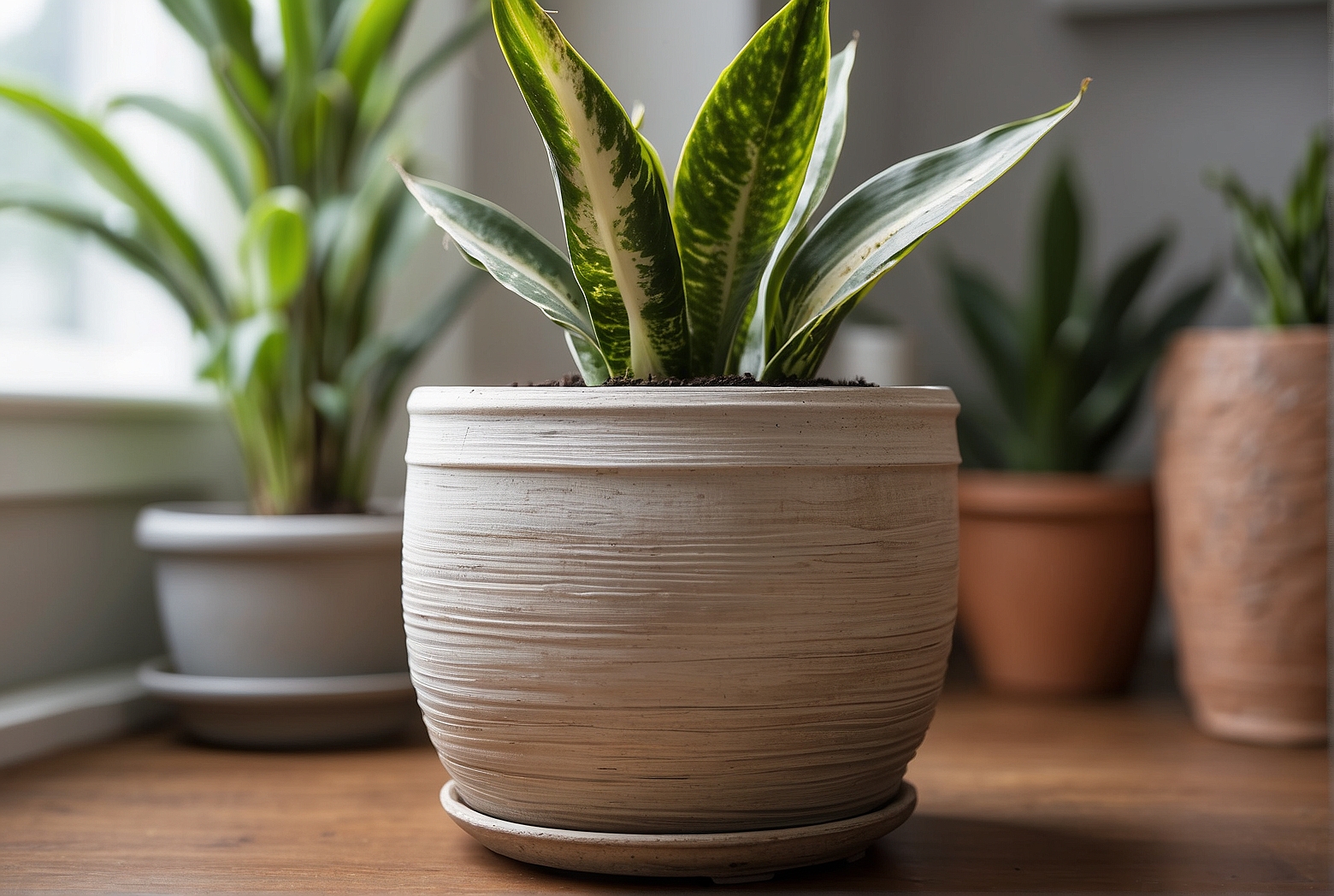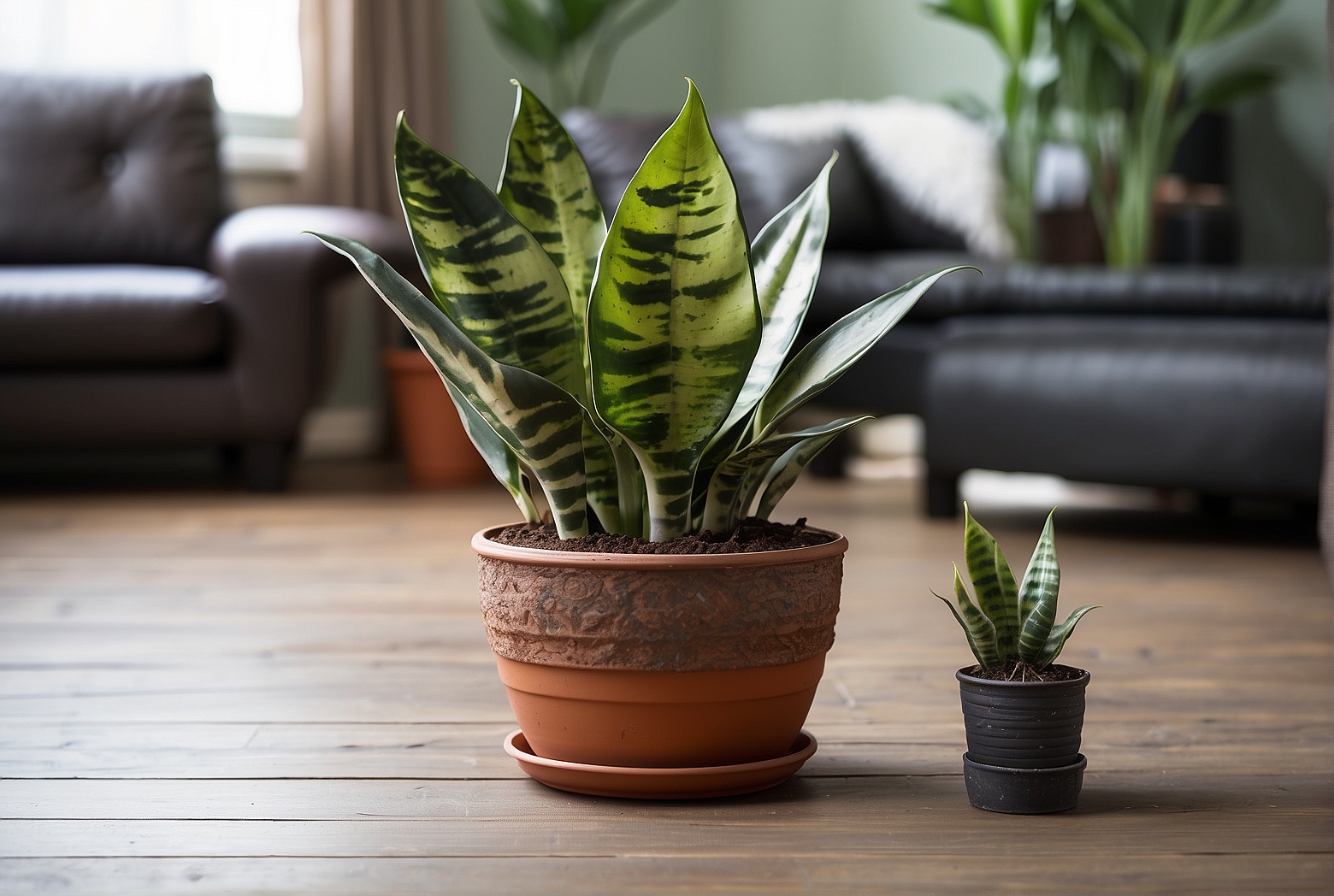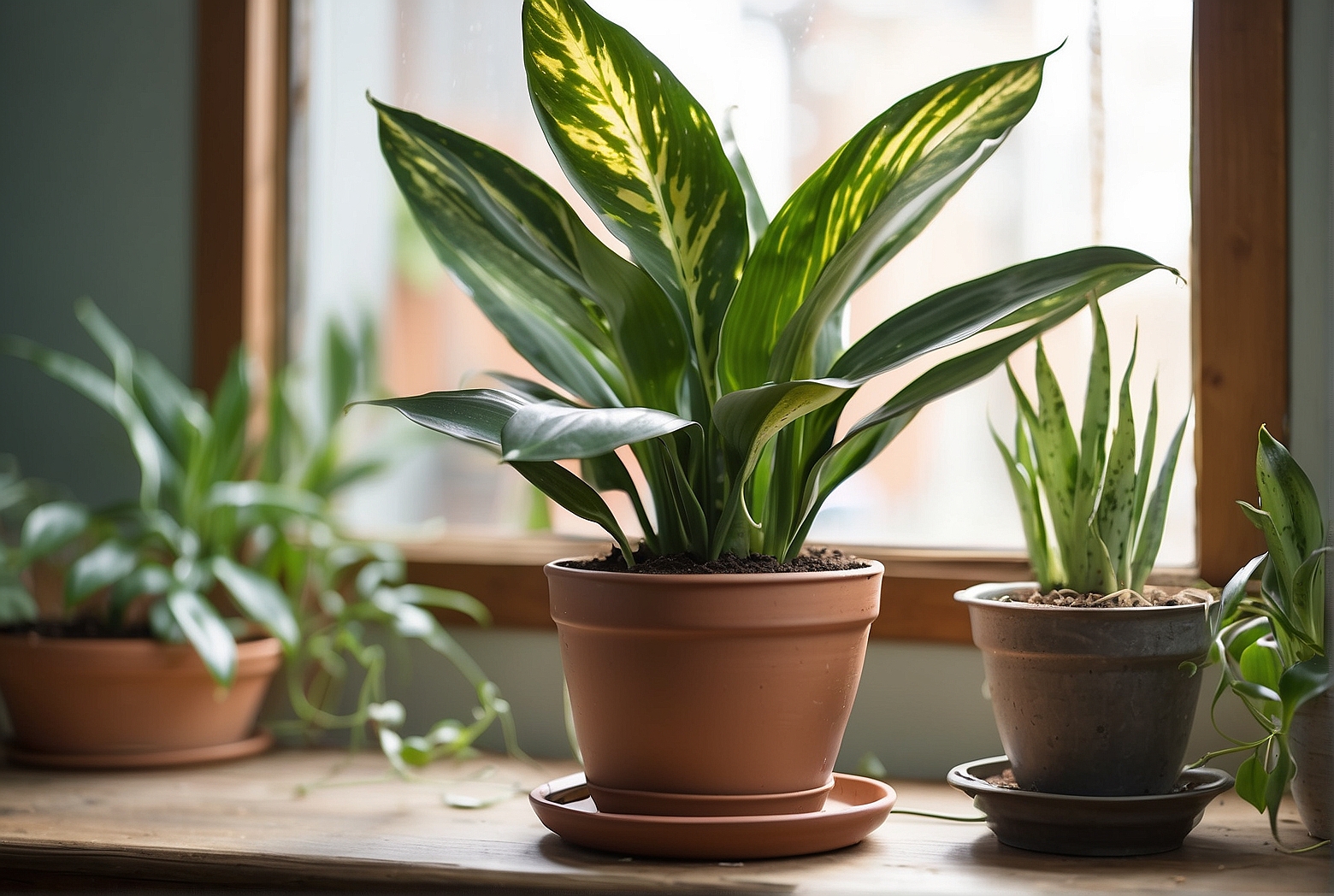Last Updated on April 16, 2024 by Tony Manhart
Have you ever wondered why your snake plant seems to be stagnant in its growth? Despite your best efforts to care for it, you may be left wondering why it’s not flourishing as you had hoped. In this article, we will explore some common reasons why your snake plant may not be growing and provide helpful tips to encourage its healthy development. So, if you’re ready to unlock the secrets to a thriving snake plant, read on!
Lighting
Insufficient light
If your snake plant is not growing, one possible reason could be insufficient light. Snake plants are known for their ability to tolerate a wide range of light conditions, but they still require some amount of light to thrive. If you have placed your snake plant in a dark corner or a room with very little natural light, it may not be getting enough light to support its growth. Consider moving your snake plant to a brighter location, preferably near a window where it can receive indirect sunlight.
Excessive light
On the other hand, if your snake plant is not growing despite being placed in a well-lit area, excessive light may be the culprit. While snake plants can tolerate low light conditions, direct sunlight for prolonged periods can actually harm them. If your plant is getting too much direct sunlight, it may experience sunburn and the leaves may turn yellow or brown. To fix this issue, try moving your snake plant away from the intense sunlight or provide some shade during the hottest part of the day.
Watering
Overwatering
Overwatering is a common mistake that many plant owners make, and it can hinder the growth of your snake plant. Snake plants are very resilient and can tolerate drought conditions, so they do not require frequent watering. If you notice that the soil is consistently wet or waterlogged, it could be a sign of overwatering. Over time, excessive moisture can lead to root rot and prevent your snake plant from growing. To prevent overwatering, allow the soil to dry out completely between waterings and make sure the pot has proper drainage.

Underwatering
While snake plants can tolerate drought conditions, underwatering can also stunt their growth. If you neglect to water your snake plant for extended periods, the leaves may become dry and shriveled, and the growth may slow down or stop altogether. To avoid underwatering, make sure to water your snake plant when the top inch of soil feels dry to the touch. However, be cautious not to overwater, as discussed in the previous section.
Temperature
Extreme temperatures
Extreme temperatures can have a negative impact on the growth of your snake plant. Snake plants prefer temperatures between 70-90°F (21-32°C), making them well-suited for indoor environments. Exposure to temperatures below 50°F (10°C) or above 95°F (35°C) can cause stress to the plant and slow down its growth. If your snake plant is not growing, consider repositioning it away from drafty windows, air vents, or areas with fluctuating temperatures, such as near radiators or heaters.
Inconsistent temperatures
In addition to extreme temperatures, inconsistent temperatures can also affect the growth of your snake plant. Temperature fluctuations, especially sudden drops or rises, can cause stress and slow down the plant’s growth. To ensure consistent temperatures, try to place your snake plant in a location with stable room temperatures and avoid exposing it to drastic temperature changes, such as moving it from a heated room to a cold outdoor space.
Soil
Incorrect soil type
The type of soil you use can greatly impact the growth of your snake plant. Snake plants prefer well-draining soil that does not hold excess moisture. If you have planted your snake plant in heavy or compacted soil, it may lead to waterlogging and root rot, preventing the plant from growing. To promote optimal growth, use a well-draining potting mix specifically formulated for succulents or cacti. These mixes typically contain a blend of materials such as sand, perlite, and peat moss that allow excess water to drain away from the roots.

Poor drainage
Poor drainage is closely linked to the issue of overwatering discussed earlier. If the potting mix or container does not have proper drainage, excess water will accumulate and saturate the soil, leading to root rot and hindering the growth of your snake plant. Ensure that your pot has drainage holes at the bottom to allow water to escape freely. If you’re using a decorative pot without drainage, consider using a nursery pot with drainage holes and then placing it inside the decorative pot.
Container Size
Small container
Using a small container can restrict the growth and development of your snake plant. As snake plants grow, they will need ample space for their roots to spread and for new growth to emerge. If your snake plant is in a container that is too small for its size, the roots may become pot-bound, resulting in stunted growth. To promote healthy growth, choose a pot that provides enough room for the plant’s root system to expand. As a general rule, the pot should be about 1 to 2 inches larger in diameter than the current pot.
Large container
While a small container can hinder growth, an excessively large container can also have a negative impact on your snake plant. When the pot is too big, excess soil retains moisture, which can lead to overwatering and root rot. Additionally, a large pot takes longer to dry out, which may result in the plant’s roots staying overly wet for extended periods, impeding growth. When repotting your snake plant, opt for a container that is slightly larger than its current size, allowing for some growth while still providing proper drainage.
Nutrients
Lack of nutrients
If your snake plant is not growing, it is possible that it is not receiving adequate nutrients. Snake plants are generally low-maintenance and can survive in nutrient-poor conditions, but they still require some essential nutrients to fuel their growth. If the soil in which your snake plant is growing lacks important nutrients such as nitrogen, phosphorus, and potassium, it may struggle to grow properly. Consider fertilizing your snake plant with a balanced houseplant fertilizer specifically formulated for succulents or follow the instructions on the fertilizer packaging to ensure proper nutrient uptake.
Excess of nutrients
While lack of nutrients can be a problem, an excess of nutrients can be equally detrimental to the growth of your snake plant. Over-fertilizing can cause fertilizer burn, where the roots become damaged by an accumulation of salts in the soil. This can inhibit the plant’s ability to take up water and nutrients and lead to stunted growth or even death. To prevent this issue, always follow the recommended dosage on the fertilizer packaging and avoid applying fertilizer more frequently than the instructions suggest.
Pests
Insect infestation
Pests such as spider mites, mealybugs, and aphids can infest snake plants and negatively impact their growth. These pests feed on the plant’s sap, weakening it and leading to stunted growth, yellowing leaves, or wilting. Regularly inspect your snake plant for any signs of pest infestation, such as webs, small crawling insects, or distorted leaves. If you notice pests, take immediate action to control them. You can use organic pest control methods like neem oil, insecticidal soap, or wiping the leaves with a damp cloth to remove the pests.
Fungal or bacterial infection
Snake plants are generally resistant to diseases, but they can still fall victim to fungal or bacterial infections, which can impede their growth. Overwatering, poor drainage, and high humidity levels can create a favorable environment for these pathogens to thrive. Symptoms of infection may include yellowing leaves, soft stems, and a foul odor. If you suspect a fungal or bacterial infection, remove any affected parts of the plant using sterile tools and adjust your watering practices to prevent further infection. Applying a fungicide or bactericide specifically formulated for houseplants may also help control the infection.
Root Bound
Pot-bound roots
When the roots of your snake plant outgrow the current pot and become tightly packed, the plant is considered root bound. This can significantly hinder the growth of your snake plant. Pot-bound roots lead to restricted nutrient and water uptake, limiting the plant’s ability to grow and thrive. To alleviate this issue, it’s important to repot your snake plant every 1-2 years, especially if you notice roots emerging from the drainage holes or becoming tightly coiled within the pot. When repotting, gently loosen the roots and transfer the plant to a slightly larger pot with fresh well-draining soil.
Root rot
As mentioned previously, overwatering and poor drainage can result in root rot, a condition where the roots become damaged and decay due to excess moisture. If your snake plant has root rot, it may exhibit symptoms such as wilting, yellowing, or mushy roots. Root rot can impede the growth of your plant and, if left untreated, may even lead to its demise. To address root rot, carefully remove the affected parts of the plant, trim away any mushy or discolored roots, and repot the plant in fresh well-draining soil. Adjust your watering practices to prevent the recurrence of root rot.
Dormancy
Seasonal dormancy
Snake plants may enter a dormant phase during certain seasons, typically in winter. During this period, the growth slows down, and the plant conserves energy. If your snake plant is not growing during the winter months, it is likely experiencing seasonal dormancy, which is a natural process for many plants. During this time, reduce watering frequency and avoid fertilizing. Keep the plant in a location with stable temperatures and provide minimal, indirect light. Once the dormancy period ends, your snake plant should resume its growth.
Health-related dormancy
If your snake plant is not growing and there are no obvious environmental issues, it might be going through health-related dormancy. This type of dormancy can occur if the plant is stressed or facing health issues, such as root damage, pests, or diseases. In these cases, the growth slows down as the plant directs its energy towards recovering and repairing itself. Identify and address any underlying issues, such as correcting watering practices, treating pests or diseases, and providing optimal care. Once the plant recovers, it should start growing again.
Snake Plants Varieties
Different growth rates
It’s important to note that different varieties of snake plants can have varying growth rates. Some varieties naturally grow faster, producing more leaves and increasing in size quicker than others. If your snake plant seems to be growing slower compared to other plants of the same species, it could simply be due to its inherent growth rate. Assess if the plant is otherwise healthy and displaying no signs of stress or disease. As long as the plant is not experiencing any other issues, a slower growth rate might be normal for that particular variety.
Variations in care
Different snake plant varieties may have specific care requirements that can influence their growth. Some varieties prefer brighter light conditions, while others can tolerate lower light levels. Certain varieties may require more frequent watering or different soil types. As an attentive plant parent, it’s important to familiarize yourself with the specific care requirements of your snake plant variety. By providing the right conditions and care tailored to the specific variety, you can ensure optimal growth and long-term health for your snake plant.
In conclusion, if your snake plant is not growing as expected, there are several factors to consider. Assess the lighting conditions, watering practices, temperature, soil type, container size, nutrient levels, pest presence, root health, and possible dormancy periods. By addressing any issues and providing the appropriate care, you can encourage healthy growth and enjoy your thriving snake plant. Remember to observe and adjust your care routine as needed, allowing your snake plant to flourish and bring a touch of nature into your home.
Tony Manhart is a passionate gardener who has been tending to gardens for over 20 years. He takes pride in creating beautiful outdoor spaces with plants, trees, and shrubs that can thrive in any environment. He loves to share his knowledge with others and has taught classes on gardening basics and advanced techniques. He is committed to sustainability, using natural and organic methods to create and maintain gardens. He also works with local organizations to create green spaces for communities. When he’s not gardening, Tony enjoys hiking, reading, and spending time with his family.


